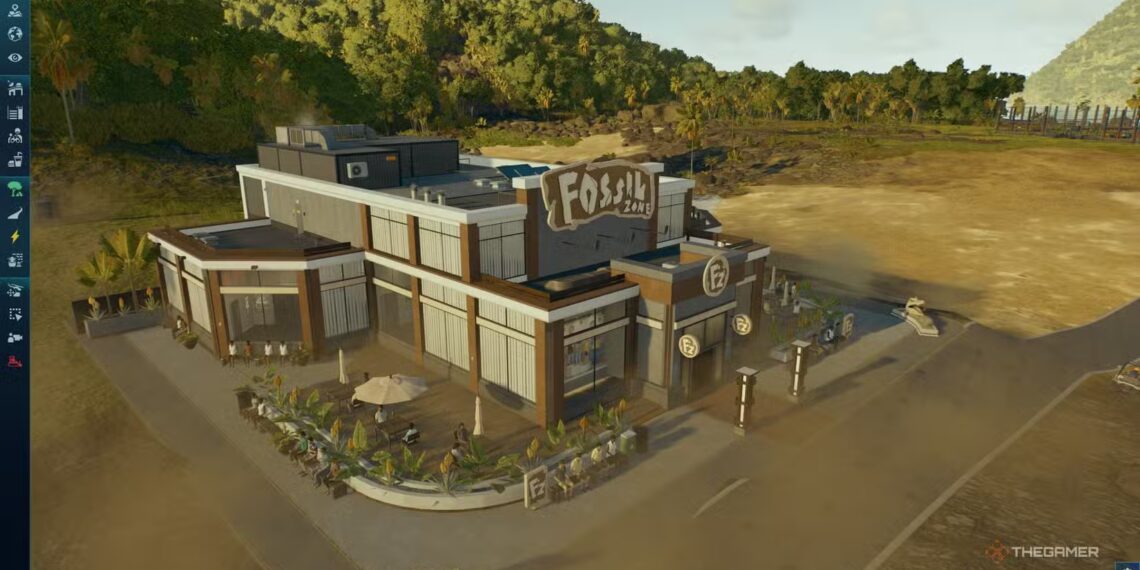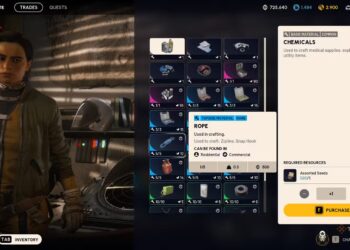Select Language:
A park filled with dinosaurs and prehistoric reptiles won’t generate revenue unless visitors are willing to spend their money. In Jurassic World Evolution 3, your park’s success depends on having amenities and attractions to keep guests entertained.
There are many types of attractions you can unlock and build in your park, including tours, educational buildings, and viewing points, so visitors can see the animals up close. Here’s an overview of all the attractions available and which ones are the best to invest in.
All Attractions in Jurassic World Evolution 3
Jurassic World Evolution 3 attractions boost your park’s appeal and transport ratings. They also help generate income as the park expands, encouraging guests to explore more and spend at nearby facilities. Below is a list of all available attractions once they are unlocked through research.
| Attraction | Guide | Power Unit | Cost |
|————–|——-|————|——-|
| Viewing Gallery | Ideal for all land dinosaurs; attach to the enclosure fence | 1 | $37,500 |
| Viewing Platform | Best for large dinosaurs; attach to the fence | 2 | $37,500 |
| Aviary Viewing Gallery | Best for flying reptiles; attach directly to the aviary | 2 | $75,000 |
| Lagoon Viewing Gallery | Best for marine animals; attach directly to the lagoon | 3 | $200,000 |
| Remote Viewing Entrance | Grants access to remote viewing galleries; connect to paths or fences | 1 | $5,000 |
| Dome Viewing Gallery | Suitable for small land dinosaurs and flying reptiles; requires a Remote Viewing Entrance | — | $32,500 |
| Lagoon Viewing Dome | Best for small marine animals; needs to connect to a Remote Viewing Entrance | — | $32,500 |
| Log Viewing Gallery | Suitable for small carnivores like Tyrannosaurus; attach inside enclosures and connect to remote viewing points | — | $42,500 |
| Activity Center | Placed near amenities to increase visitor footfall; boosts appeal by 100 | 5 | $200,000 |
| Innovation Center | Ideal for high-visitor areas; boosts appeal by 250 | 4 | $375,000 |
| Park Tour | Best for herbivores and flying reptiles; runs through enclosures, increasing transport ratings | 1 | $75,000 |
| Jurassic Tour | Similar to Park Tour, boosts transport ratings | 1 | $75,000 |
| Gyrostation | Suitable for carnivores and flying reptiles; can run through enclosures | 2 | $75,000 |
| Balloon Tour | Great for all animals; offers long-distance views without affecting transport ratings, ideal for open parks | 2 | $100,000 |
| Zipline | Best for large herbivores; does not increase transport ratings | 5 | $37,500 |
| Cretaceous Cruise | Needs to lead into water within the enclosure; best for herbivores in water settings | 1 | $75,000 |
| Dinosaur Encounter | Connects to fences; best for small herbivores | 1 | $137,500 |
| Amphitheater | Designed for large carnivores; requires a sizable area | 2 | $500,000 |
Setting Up Attractions on Enclosures
Most attractions in Jurassic World Evolution 3 are straightforward to set up. They just need to be connected to a path and have power. Viewing galleries and platforms can attach directly to enclosures as long as nothing blocks where they’re placed, like other buildings or paths.
Remote viewing points are located inside enclosures with a connected access point on a path. If you need to move a remote view, just reconnect the tunnel by selecting the gallery and linking it to a new access point.
The trickier attractions, such as Cretaceous Cruise and Dinosaur Encounter, need specific placement. Both require a connection to a fence around the enclosure, and the Cruise must lead into water. If the Dinosaur Encounter can’t connect, try removing the fence and rebuilding it so it ties into the attraction’s sides.
The Best Attractions in Jurassic World Evolution 3
Each attraction serves a different purpose, depending on your goals for the park. Are you mainly focused on making money to fund research? Or do you want to create an impressive display of dinosaurs? Do you want attractions that transport guests or let them get close to the animals?
Viewing Dinosaurs
Platforms and galleries allow guests to see dinosaurs up close, with some suited for aviaries or lagoons. The Log Viewing Gallery is particularly versatile; it fits inside enclosures, attached to remote viewing entrances, with wide arcs to maximize visibility. It works well for smaller dinosaurs like Compsognathus or Gallimimus and offers an immersive, natural feeling.
Transport Attractions
The Gyrostation (a ride) is more engaging than fixed tours and can be placed to run through any land enclosure, whether for carnivores or herbivores. Be cautious when positioning tracks to avoid collisions with paths or structures. For a more permanent, less intrusive transport system, the Monorail is a top choice.
Main Park Tours
The Balloon Tour is the best for maximizing dinosaur sightings, as it can be built anywhere and offers wide views without impacting transport ratings. You can set up many stations for extensive coverage, but keep in mind it doesn’t add to your transport rating.
Park Appeal and Income
While the Innovation Center provides a large boost (+250) in park appeal, it needs lots of space. The Activity Center adds a +100 boost and can be tailored to specific guest types—such as Normal, Adventure, Nature, or Luxury—helping you attract the right visitors and increase profits at nearby amenities like food, drink, or shopping outlets.
Choosing amenities depends on your focus. Building an Activity Center aligned with the predominant guest profile of your attractions and amenities maximizes your park’s attractiveness and profitability.







